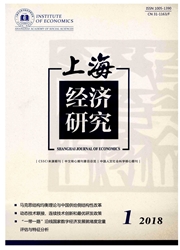

 中文摘要:
中文摘要:
全球金融危机之后美元实行量化宽松政策,人民币总体持续升值。形成了人民币“外升内贬”现象。同时,我国开始推动人民币其国际化。在美元主动贬值的背景下,人民币“外升内贬”影响了人民币国际化途径。本文从国际收支的角度,选取汇率、利率、国际游资等变量,运用SVAR模型进行实证分析,分析人民币“外升内贬”对人民币国际化的影响。结论是:人民币“外升内贬”阻碍了人民币国际化的途径,并加剧了人民币国际化的“特里芬”难题,将动摇人民币的国际化地位。
 英文摘要:
英文摘要:
Since the global financial crisis, the United States has launched quantitative easing monetary policy. The exchange rate of RMB continue to rise. Formed the phenomenon of the external appreciation and the internal depreciation of RMB. At the same time, the hard currency RMB began to promote the advance of RMB internationalization. Under the background of dollar' s active devaluation, the external appreciation and the in- ternal depreciation of RMB affect the way of RMB internationalization. From the perspective of balance of pay- ments, this paper take exchange rates, interest rates, international hot money as variable and use the SVAR model to analyse the influence of the external appreciation and the internal depreciation of RMB to RMB inter- nationalization. Having a Conclusion : The phenomenon of the external appreciation and the internal depreciation of RMB has a bad effect on the way of RMB internationalization. Also it intensify the Triffin Dilemma of RMB and prevent RMB to become international currency.
 同期刊论文项目
同期刊论文项目
 同项目期刊论文
同项目期刊论文
 期刊信息
期刊信息
